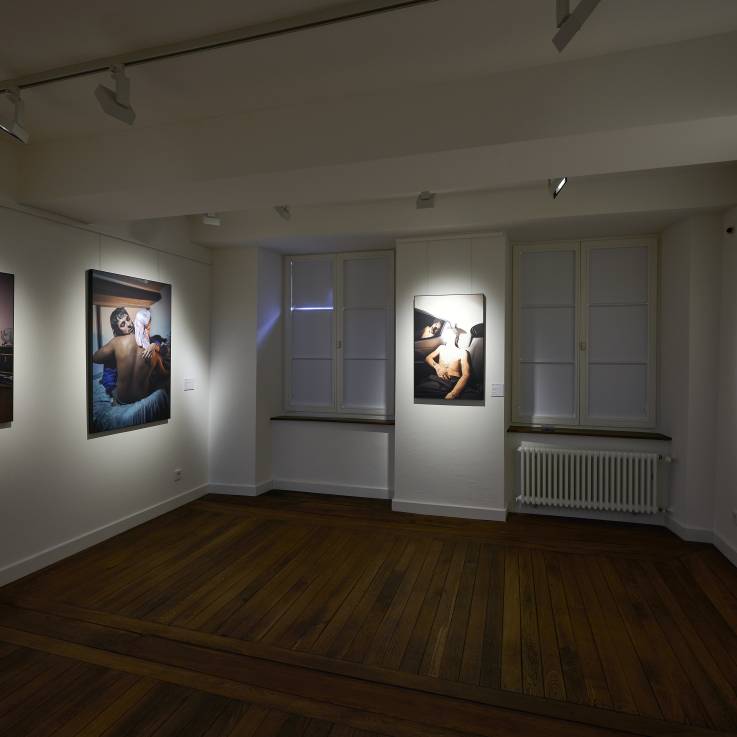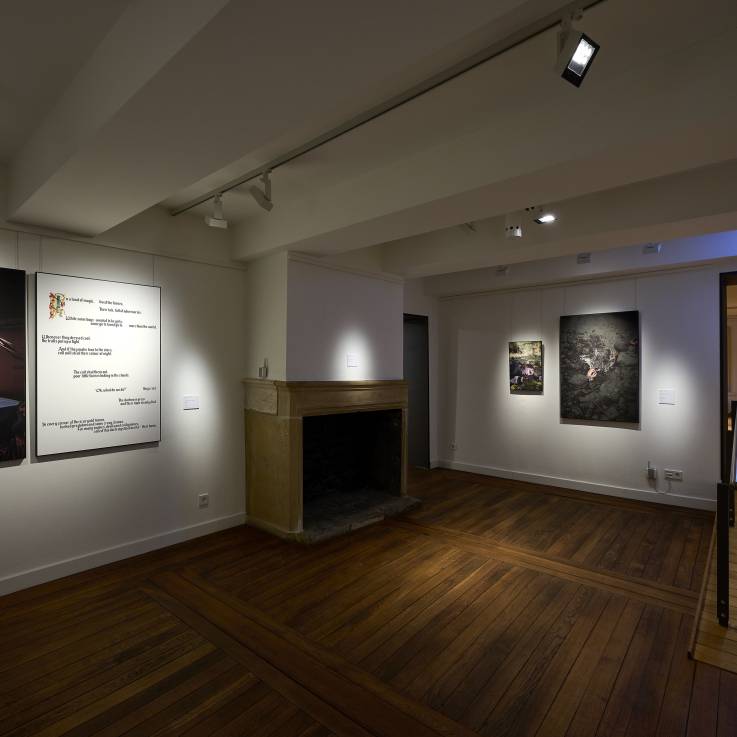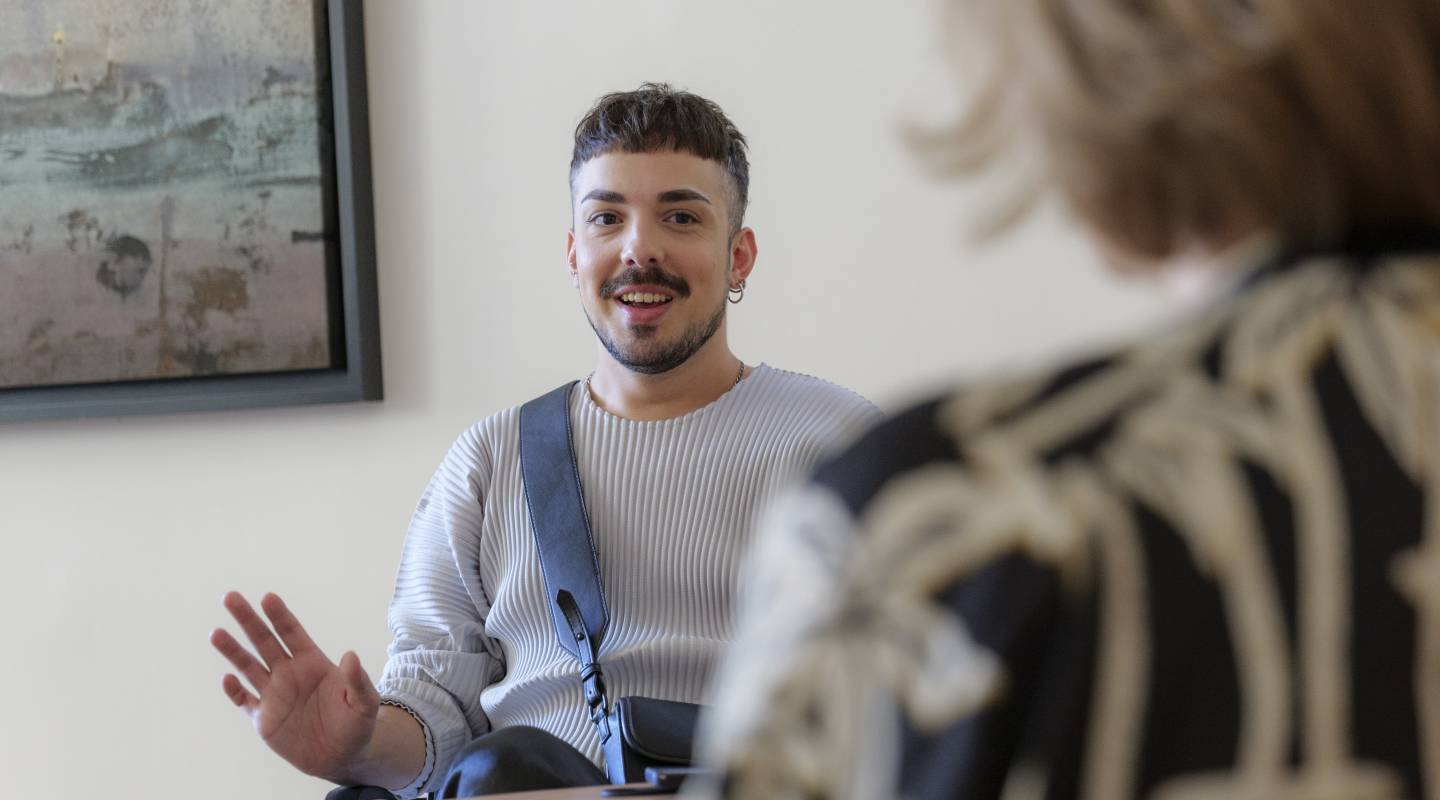We start by speaking about his lifelong fascination with photography. His family moved to Luxembourg when he was two years old. His parents ended up separating soon after. He notes that there are no family albums from those early years in Luxembourg. “Looking back at the pictures, it was weird,” says Bruno, “You see me as a baby, then suddenly I’m in kindergarten. There was this gap in the records.” When he got his first camera age seven, he started to make one family album after the other, documenting his life with his mother, stepdad and siblings. In a sense, he was filling in the gaps – an act of reclaiming the past that informs his work to this day.

Installation view from the show Je est un autre at the Nationalmusée um Fëschmaart
Reimagining the world
This strong link to the past plays a key role in the artist’s visually impactful renderings. In Tales of Junior (2022), for instance, he uses the name his mother originally wanted to give him – Junior – and explores an alternative version of his childhood self, whilst in Sonhos de Menino (2021-2022), he revisits and reactivates childhood memories in the forest. This act of imagining what might have been – and what might be – permeates many of his series.
Bruno’s need to tell the rest of the story, to supplement a narrative that is lacking in some way, is apparent in our conversation. At one point, he mentions Edward Steichen’s monumental project Family of Man; “I find these images so fascinating, but they don’t really show the family of today. Some families are missing. Being queer, we often speak about chosen families as well.”
Similarly, when he first visits the Louvre after finishing his studies, Bruno was completely gripped by the works on show; “I just stood in the middle of a room for an hour, in complete awe. But I couldn’t identify with the subjects in the paintings. Everything was so heteronormative. The queer aspect was missing.” So, he decided to create his own version of the Louvre, expanding the narrative and shedding light on an underrepresented community.
The resulting series is In ore gloria (2021), which portrays members of Luxembourg’s queer community reenacting paintings from the Louvre. Sometimes the images draw on the visual composition, sometimes on the story that the painting tells. The audience is left to speculate on which works inspired the different photographs. This is another aspect of Bruno’s work – he likes to leave room for interpretation.

Installation view from the show Je est un autre at the Nationalmusée um Fëschmaart
Fantasy rooted in reality
Indeed, it’s often unclear whether the scenes he captures are staged or not. Bruno explains: “I like it to stay ambiguous, the extent to which something is real or not.” Treading a fine line between fact and fiction, the artist likes to keep the audience guessing. However, he also points out that people never really pose for him – most of them he knows personally and the images he selects are when they are at their most natural. “People should be able to identify themselves with what I portray,” he notes, “My work is personal, but it also addresses broader issues in society, like LGBTQI+ rights.”
There’s no denying the fantastical vein that runs through Bruno’s work, though. Replete with Disney references and theatrical costumes, works like Tales of Junior and Back to Neverland (2019-2021) clearly draw on fairy tale tropes and elaborate staging whilst also telling very real stories. This form of fantasy rooted in reality has become a trademark of sorts for the artist. “At the beginning I took a more documentary approach, but then I realised that Bruno was kind of missing in all of that,” he muses.
A little known fact about Bruno is that Lady Gaga is one of his biggest influences; “Born This Way helped me to discover myself back in 2011. Every series has a Lady Gaga touch.” His works always channel the energy of this iconic performer, known for her dramatic outfits and image reinventions. The title of his series In ore gloria, for instance, comes from her song Edge of Glory, translated into Latin to give it more gravitas. Another thing to look out for in his works – the Easter eggs that he plants. This playful term usually refers to hidden details in films or video games. In Bruno’s case, he uses the same props and elements across different series as a way of interlinking his ongoing projects.
As our conversation draws to a close, the artist gives us a sneak peek of his next project: a dreamy series of images captured in Japan, a love story dedicated to his partner of ten years. As always, he plans to incorporate elements of the fantastical into the series, this time playing with the idea of the lullaby and the cradle. This was inspired by an encounter with Holocaust survivor Bella Shirin during his residency in Lithuania, who stated that you have to put the devil inside of you to sleep. The next installment of Bruno Oliveira’s characteristic blend of the real and the imagined, the remembered and the reclaimed, promises to be just as compelling as the works currently on display at the museum.
Text: Katja Taylor - Images: MNAHA/Tom Lucas
Source: MuseoMag N°IV 2023
Je est un autre is on view at the Nationalmusée um Fëschmaart until the 22 October 2023. Admission is 7 €.
